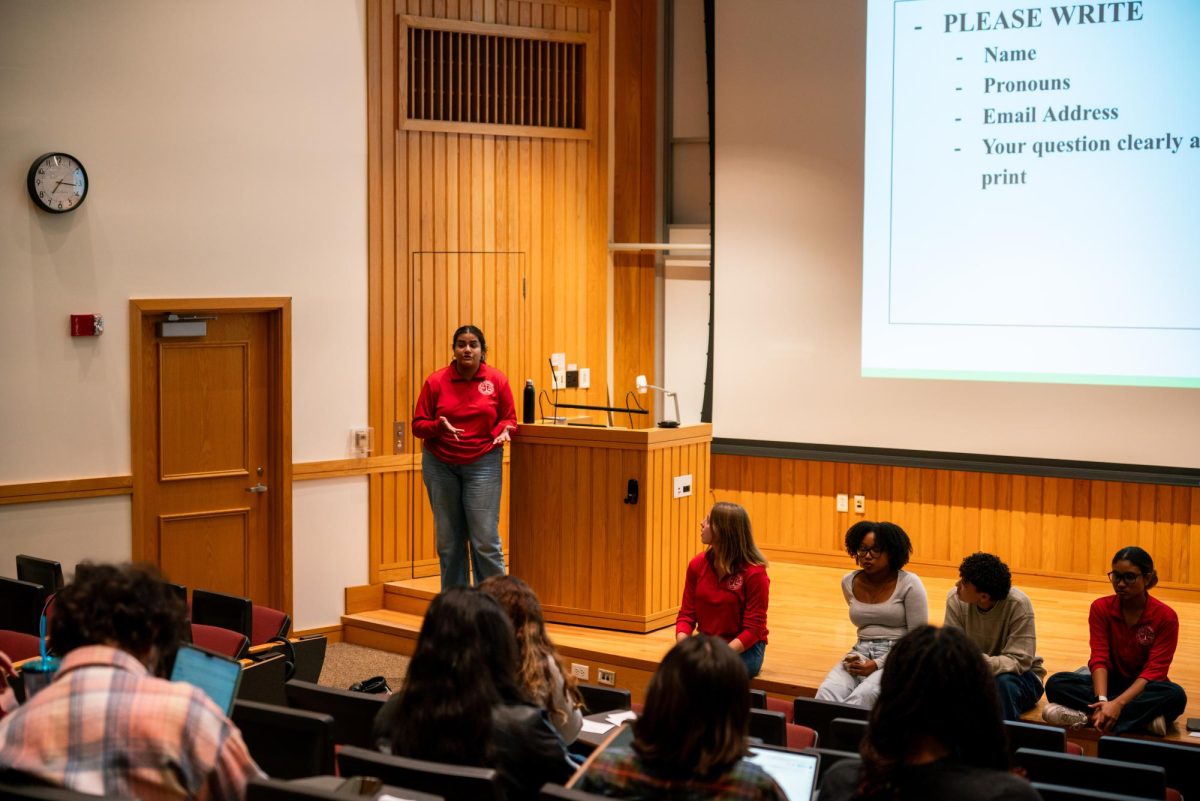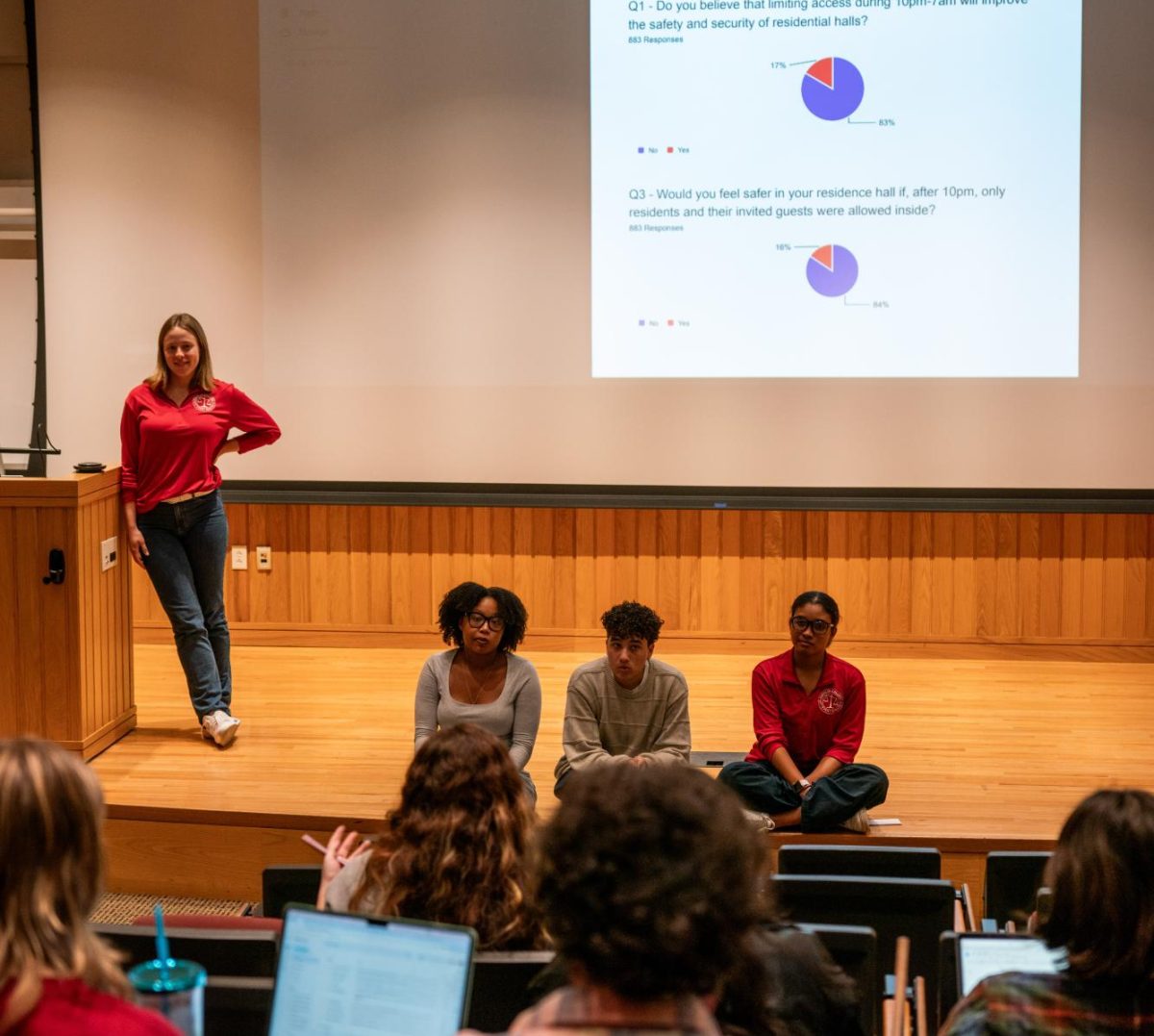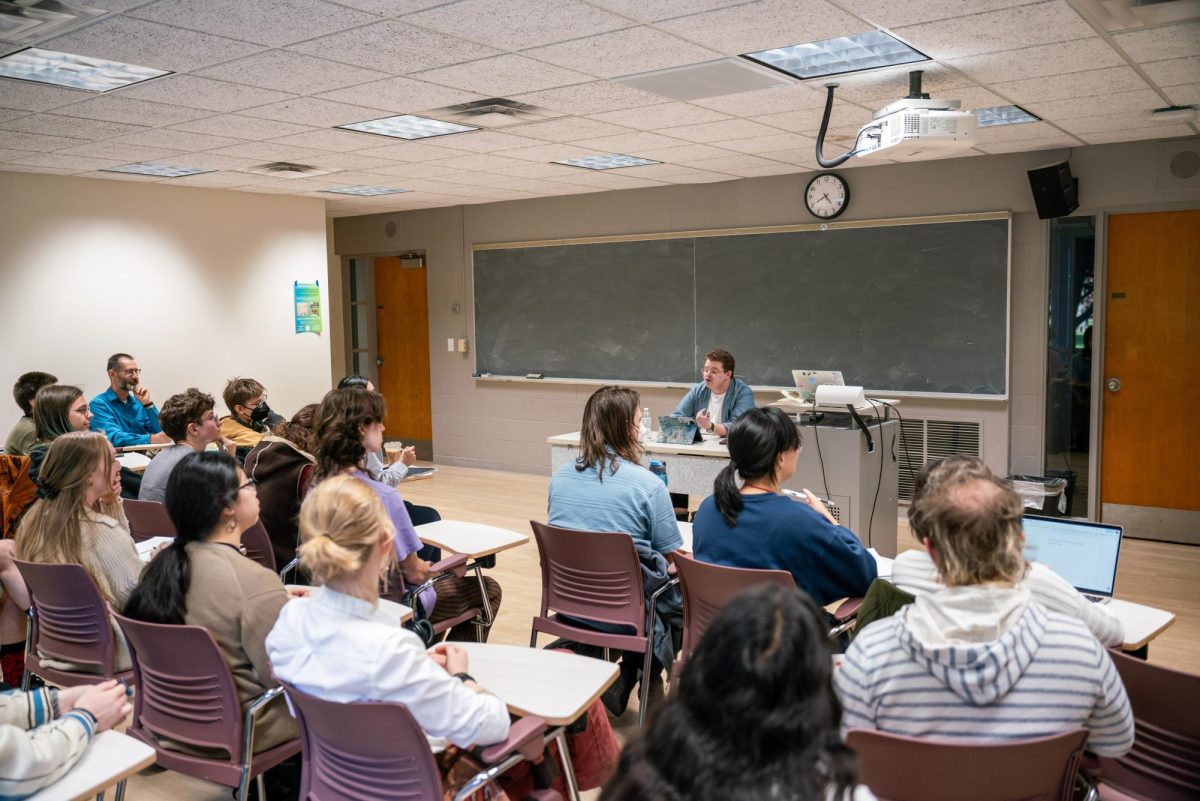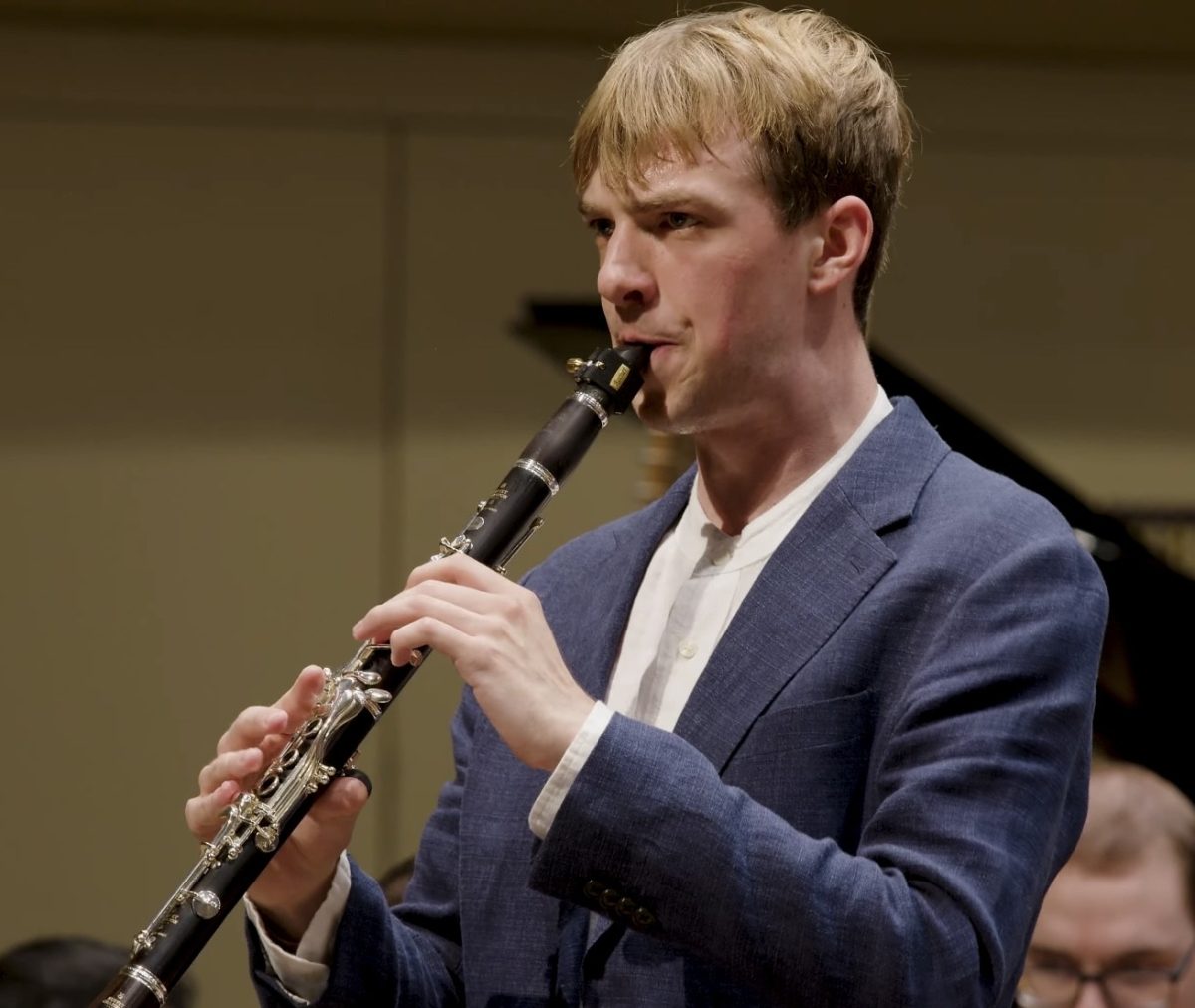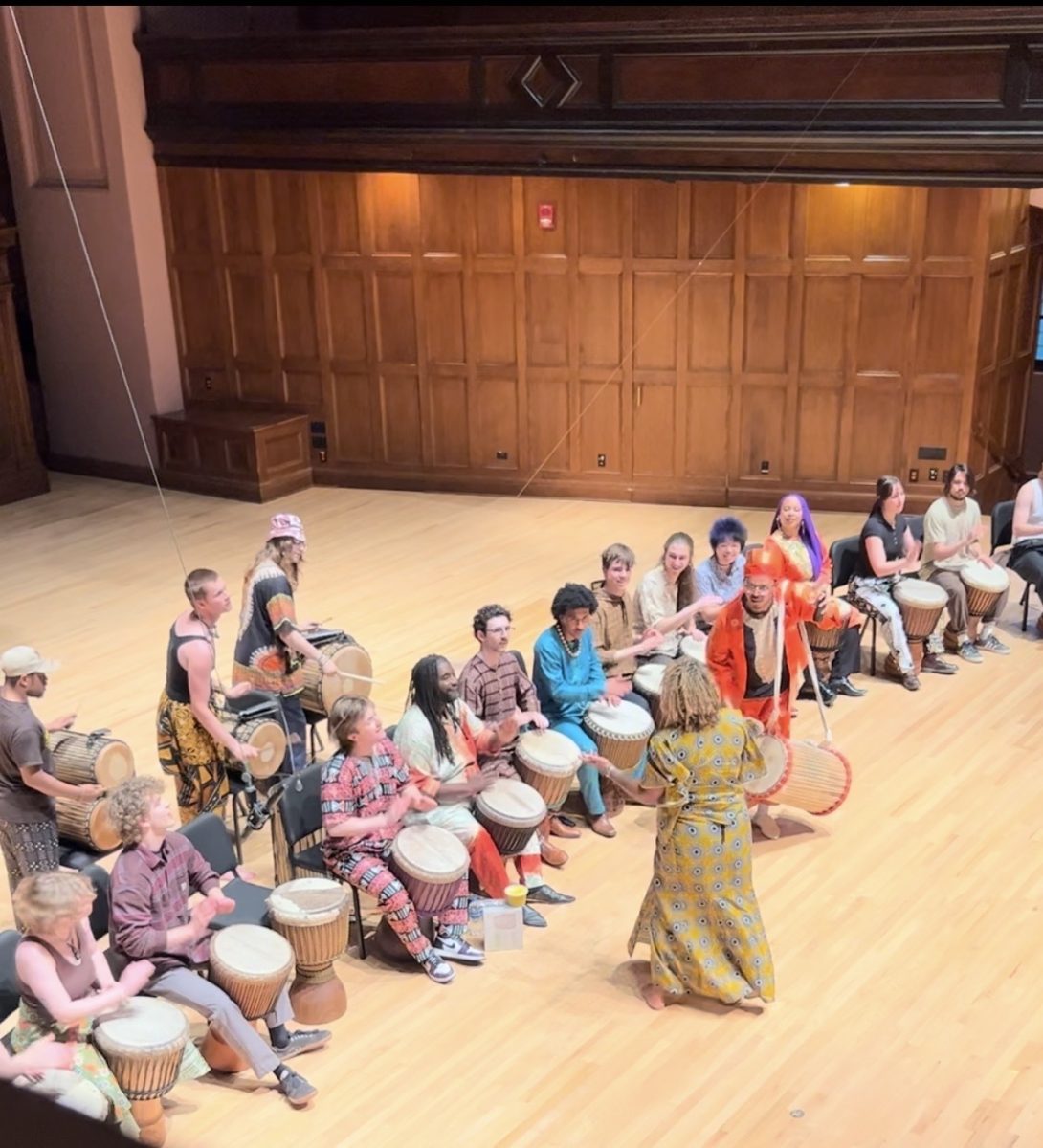Oberlin-Cleveland Ensemble Offers Traditional Tastes
March 16, 2012
The Cat in the Cream was transformed into a teahouse for the first Oberlin-Cleveland Chinese Music Ensemble performance on March 14. Complimentary authentic green and white tea was handed out to the almost 60 attendees, as the Cat hosted a refreshing collaborative performance between the Cleveland group and the Conservatory.
The instruments used for the ensemble were unusual, especially for those unfamiliar with Chinese music. The two participating Conservatory students, sophomore Nick Loh and junior Jie Yao, played the erhu and the dizi respectively, as they accompanied the Cleveland group on a long set of traditional Chinese and Taiwanese folk songs.
On the erhu — a two-stringed bowed instrument that resembles a violin or fiddle in size and sound, yet is held upright like a bass — Loh performed a solo piece, translated as “Fisherman’s Song.” The performance showcased his talent, a fact that was evident in the audience’s mesmerized response. Yao also contributed to the ensemble beautifully with the dizi, a traditional bamboo flute. The most intriguing instrument, however, was the guzheng, a Chinese version of a zither that was longer and produced a range of harp-esque chords from a continuous flood to plucked staccato.
Nine musicians in total graced the stage, with the special vocalist Xue “Snow” Yu joining on a number of pieces. Wearing an eye-catching diamond tiara, Snow’s appearance was no distraction from her voice. She displayed an impressive sopranic range which was sure to arouse any dozers in the crowd.
David Badagnani, who grew up and studied music in Ohio, played an array of instruments throughout the night, including a sheng and an erhu. In addition to his role as a musician, he also assumed the part of an educator. Between each song, Badagnani provided short yet comprehensive historical contexts, utilizing a vast scope of knowledge on Chinese music. He talked about topics ranging from the yellow wintersweet blossoms that bloom in China during the winter to the specific dynasties and provinces each song was from. He also informed the audience that a piece that was to be performed by Huang Zi, OC ’11, was composed by the first Chinese student to attend Oberlin’s Conservatory from 1924 to 1926.
The meditative flutes set the tone for many songs as the rest of the orchestra joined in. Light percussion occasionally picked up the tempo, with the exception coming from a heavy beating of drums in a later song. The pipa (a pear-shaped lute), played by Yan Ping Ye, sometimes stole the show with expert plucking and momentous build-ups.
Adding yet another aspect to the cultural abundance of the night was a 24-step Tai Chi Chuan performance by College junior Yue Tang. The ensemble fittingly accompanied Tang, as she gracefully performed the steps across the floor in front of the stage. Pushing air out in front of her body with two controlled open palms, her movement displayed a keen sense of composure and discipline.
The last song (not including an impromptu encore performance by Snow titled “Dance of the Golden Snake”) proved to be an exception to the overall tranquil performance. The piece, composed by Nie Er — who also composed the national anthem of the People’s Republic of China — was vibrant and more commonly thought of as Chinese music heard during New Year celebrations. Festive drums echoed through the room, as the rest of the ensemble joined in a momentous build up until reaching a roaring ecstasy of symphonic joy.
Overall, however, the Oberlin-Cleveland Chinese Music Ensemble provided a zen experience for the audience, enabling a nostalgic out-of-body reaction. If you closed your eyes, the music could transport you to a peaceful and remote Chinese countryside. The effect of the instruments left a mixed feeling of mechanical precision and organic fluidity, and instilled a certain inquisitiveness upon which the audience could dwell.






